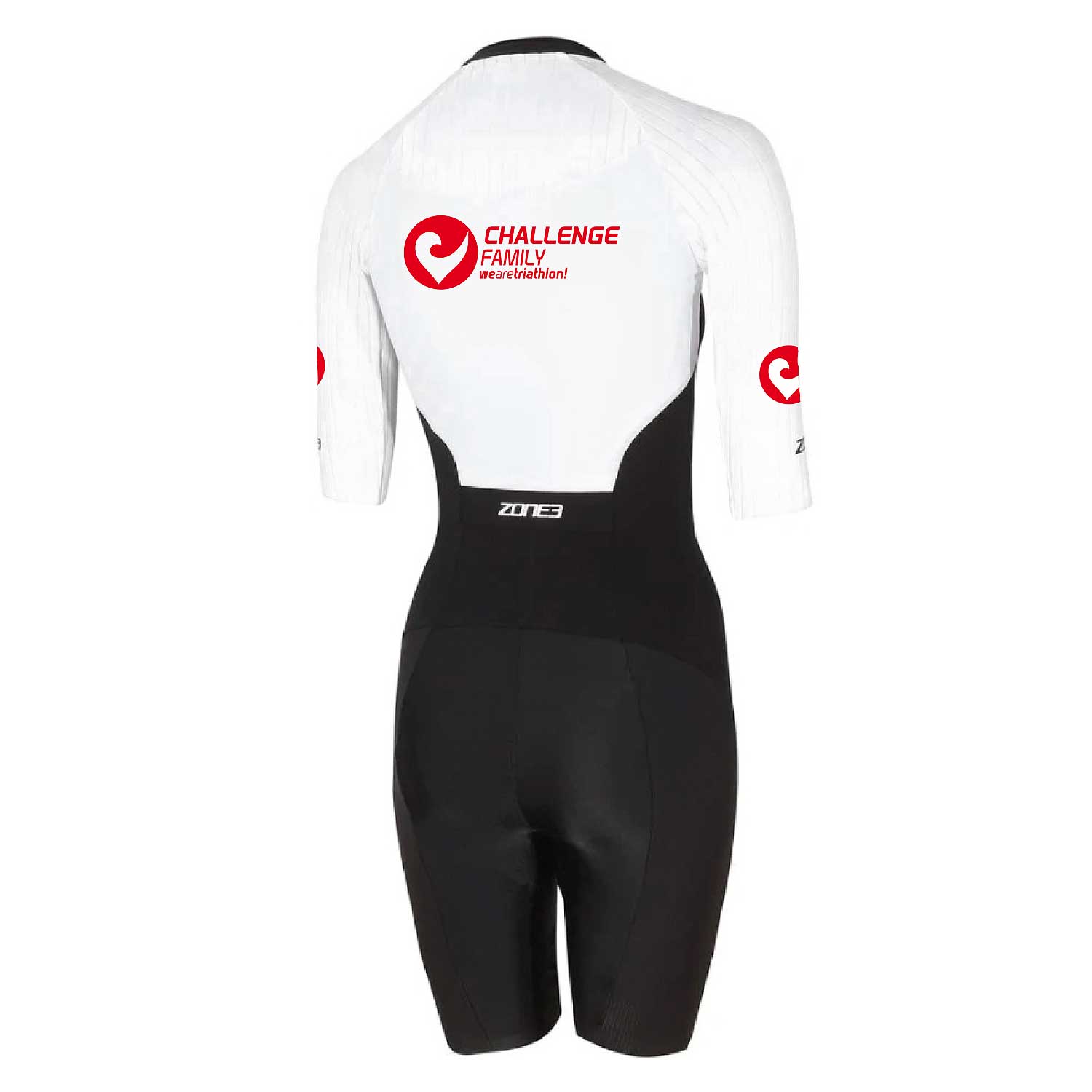20 Jahre ist es nun her, dass mit dem Federgabelmodell „Rock Shox Ruby“ versucht wurde, Mountainbike-Technik auf das Rennrad zu übertragen. Nach kurzem Hype scheiterte der Versuch jedoch kläglich. Heute will die Scheibenbremse das Rennrad erobern. Problemlöser oder neues Problem? Wir versuchen die Stärken und Schwächen des am Mountainbike unumstrittenen Bremssystems für das Rennrad zu analysieren.
Eines ist bereits jetzt deutlich: Die Scheibenbremse hat eine deutlich höhere Akzeptanz, als es die Federung in Rennradkreisen je hatte. Viele Rennradhersteller haben bereits Modelle damit im Programm, und die Zahl der Käufer ist auch dem Exoten-Status längst entkommen. Dabei darf man auch mit Blick auf die vorhandenen Stärken nicht vergessen, dass auch die Scheibenbremse kein Allheilmittel ist und durchaus ihre Schwächen hat.
Vorteile der Scheibenbremsen
- Bremswirkung
Wer vom Mountainbike eine gute Disc gewohnt ist, der weiß, dass die reine Bremswirkung einer Felgenbremse weit überlegen ist. Beim Umstieg von Felgenbremse zur Disc merkt man dies noch nicht so stark, wer aber mal den Schritt zurückgeht, der erschrickt regelrecht, aufgrund der Unterschiede in der Bremsleistung. Ob ein schmaler, unprofilierter Rennradreifen diese Bremswirkung dann auch auf die Straße übertragen kann, steht wieder auf einem anderen Blatt, denn mehr als blockieren kann das Laufrad nicht. Jedes Plus an Bremswirkung ist eigentlich überflüssig.
- Nässe- / Witterungsunabhängigkeit
Der sicherlich größte Vorteil der Scheibenbremse ist, dass sie auch bei Nässe bzw. schlechten Wetterverhältnissen eine fast unveränderte Bremsleistung abliefert, während Felgenbremsen hier massiv abbauen. Jeder kennt das Gefühl, bei Regen in die Bremse zu greifen, und es passiert ein bis zwei Radumdrehungen fast nichts, bis das Wasser auf der Felge verdrängt ist, und die Bremse Wirkung zeigt.
Bei der Scheibenbremse dagegen ist sofort die volle Leistung da. Diese Tatsache ist wohl dafür verantwortlich, dass sich nach anfänglicher Zurückhaltung die Scheibenbremse am Cyclocrossrad flächendeckend durchgesetzt hat. Dass die Scheibenbremse auch weniger verschmutzungsanfällig bei Schlammrennen ist, nutzt dem Crosser ebenfalls, ist aber für das Rennrad unwichtig.
- Keine Beanspruchung der Felgen
Da die Scheibenbremse eben nicht mehr auf der Felge bremst, muss auch keine Rücksicht mehr auf eine Bremsflanke der Felge genommen werden. Felgenhersteller sind somit unabhängiger, was die Formgebung der Felge angeht, was nicht nur der Stabilität, sondern auch der Aerodynamik der Felgen entgegenkommen könnte. Da kein Abrieb der Felge stattfindet, ist auch kein Verschleiß mehr vorhanden, was die Lebensdauer der Felge erhöht. Die Erfahrung aus dem Mountainbike-Bereich hat auch gezeigt, dass dies zu Gewichtseinsparungen an der Felge führen kann, und da diese sehr weit außen an einem rotierenden Bauteil sitzt, ist dies für Beschleunigung nicht unerheblich.
Nachteile der Scheibenbremsen
- Hitze
Man kommt um das Gefühl nicht herum, dass einige der Probleme aus der Anfangszeit der Disc Brake am MTB gerade beim Rennrad wiederholt werden. Oft sind es gerade die Viel-Bremser die glauben, eine Scheibenbremse sei für sie ein Allheilmittel. Genau da liegt das Problem: Denn eines verträgt die Scheibenbremse ganz schlecht: HITZE!
Genau wie beim Mountainbike früher werden heute am Rennrad relativ kleine Bremsscheiben verbaut. Durchmesser von 140 Millimetern hinten und 160 Millimetern vorne, sind oft gesehen. Die kleinen Scheiben werden aber bei Dauerbremsungen sehr schnell heiß. Das führt zu einigen Problemen:
Folge 1: Fading
Fading bedeutet, dass die Bremswirkung bei Dauerbremsungen aufgrund der auftretenden Hitze nachlässt, und zwar mitunter sehr extrem.
Folge 2: verglasen der Bremsbeläge
Wird eine Bremse nicht über einige Kilometer eingefahren, sondern bereits in relativ neuem Zustand sehr heiß gebremst, können die Bremsbeläge verglasen. Diese werden dann nicht mehr ihre optimale Bremswirkung bringen können.
Folge 3: Totalausfall der Bremse
Auch ein Totalversagen der Bremse ist bei zu extremer auftretender Temperatur möglich.
Folge 4: Schäden an Rahmen oder Gabel
Carbon ist allgegenwärtig im heutigen Radsport. Das betrifft das Rennrad ebenso wie das Mountainbike. Carbon Fasern bekommen Ihre Festigkeit durch Harz, welches die Fasern „verklebt“ und nach dem Laminieren aushärtet. Harz hat aber einen Schmelzpunkt. Wird also eine Scheibenbremse so heiß gebremst, dass die Temperatur darüber hinaus geht, und gelingt keine Hitzeableitung, dann ist eine Delamination, also ein „Weichwerden“ des Harzes mit entsprechender Beschädigung des Carbon-Bauteils nicht ausgeschlossen.
Speziell dieses Problem des aufweichenden Harzes bei großer Hitze hat auch bei Carbon Felgen (besonders bei Carbon Clinchern) schon zu defekten Felgen geführt. Die oben genannten Viel-Bremser sind also mit einer Felgenbremse nicht automatisch besser bedient. Jedoch ist die Umdrehungsgeschwindigkeit einer Felge (Laufrad außen) deutlich größer als die der Bremsscheibe (Laufrad innen), somit bekommt die Felge durch den Wind eine deutlich bessere Kühlung. Generell ist es für jede Art von Bremse besser kurz und scharf zu bremsen, anstatt die Bremse permanent betätigt zu halten. Auch wenn viel gebremst werden muss, sollte die Bremse zwischendurch immer wieder einmal kurz gelöst werden.
Größer = besser?
Entgegenwirken kann man dem Temperatur-Problem durch größere Bremsscheiben, was aber natürlich nicht nur die Optik beeinflusst, sondern auch zu Nachteil Nummer zwei führt.
- Stabilität
Durch die hohe auftretende Bremswirkung in Verbindung mit der einseitigen Belastung entstehen höhere Kräfte für die beteiligten Bauteile. Sowohl Rahmen und Gabel, als auch Naben und Schnellspanner müssen deutlich stabiler und steifer sein, um mit Scheibenbremsen gut zu funktionieren.
- Gewicht
Um dieses Stabilitäts-Manko auszugleichen, sind Rahmen, Gabel und Laufräder oft etwas schwerer als Felgenbrems-Modelle. Dazu kommt, dass auch die Bremse an sich meist etwas schwerer als eine Felgenbremse ist.
- Aerodynamik
Aus aerodynamischen Gesichtspunkten geht man von einem Nachteil von ca. acht Watt gegenüber einer Felgenbremse aus. Da die Scheibenbremse aber nur auf einer Seite montiert ist, werden die Unterschiede je nach Anströmwinkel sehr unterschiedlich sein. Eine Verkleidung bzw. Integration wäre zwar möglich, würde aber die bereits beschriebenen Hitzeprobleme durch schlechtere Belüftung nur noch massiv verschlimmern.
- Quietschen / Schleifen
Nervige Geräusche sind leider auch heute noch nicht völlig ausgeschlossen.
Für Schlechtwetter-Fahrer ist die Scheibenbremse aufgrund ihrer überlegenen Nassbremseigenschaften sicherlich erste Wahl. Für alle anderen eine Option, aber kein Must-Have.
TIPP
(von der Bike-Base Schliersee): Speziell für Triathleten, die eine Zeitfahr- oder Tria-Maschine als reines Wettkampfrad nutzen, kann die Scheibenbremse aber eine sehr interessante, zudem kosten- und platzsparende Option für ihr Trainingsrad ausmachen.
Ein Disc-Cyclocrossrad kann mit einem zweiten Laufradsatz in Sekundenschnelle zu einem konkurrenzfähigen Disc-Rennrad verwandelt werden. Die Rahmen von Disc Crossern und Disc Rennrädern sind ohnehin bei vielen Herstellern identisch. Die entsprechende Bremsscheibe vorausgesetzt, muss man sich keine Gedanken um die passenden Bremsbeläge oder die Einstellung der Bremse machen, sondern nur den Laufradsatz wechseln, und kann so ein Rad je nach Lust, Wetter, Jahreszeit, Gelände usw. entweder als Rennrad oder als Crosser nutzen, und hat so mit nur einem zusätzlichen Rad (neben dem Wettkampfrad) ein extrem breites Spektrum an Trainingsmöglichkeiten.
Die Saugnapfbrille





















1 Kommentar
Alexander Schulz
Also ich mag die scheibenbremse bei rennräder nicht.sie sind zu schwer,optisch nicht so schön,lassen sich schwerer reparieren,wartungsaufwand ist grosser.die felgenbremsen sind aerodynamischer.man darf halt nicht zuviel und übermäßig bremsen.das machen gerade Anfänger falsch,denn dafür sind rennradbremsen nicht ausgelegt.ich möchte,dass man auch in Zukunft rennräder ohne scheibenbremsen kaufen kann.die elektronische Schaltung treibt den Preis auch unnötig hoch,und da geht das Gefühl beim schalten verloren.